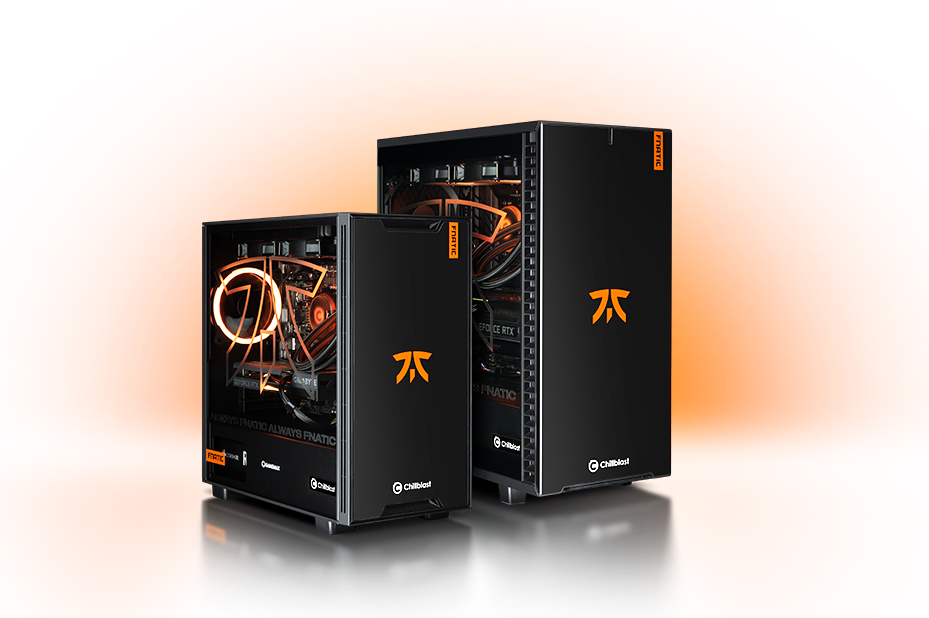This League of Legends Beginner’s Guide will help you through the basics, and even the more advanced aspects of the game. If you are a beginner in League of Legends and the game has utterly confused you, or even watching a match being played by pro E-Sports athletes has your head spinning, then you’re not alone.
Introduction
This guide was updated 10th June 2022
League of Legends – or LoL as it is commonly known – is one of the more complex games to grasp in the first few weeks or months of playing. The learning curve in LoL is quite steep, and most players will take a long time before they are confident enough to take their skills and share them with the world.
Take this LEC (LoL European Championships) match below, featuring SK Gaming and Fnatic. The frantic gameplay is not as chaotic as it looks. The strategies and tactics used in this game were carefully laid out before the match started by Head Coach, YamatoCannon, and team members Bwipo, Selfmade, Nisqy, Upset and Hylissang planning both offensive and defensive manoeuvres against their opposition.
At this level, nothing is left to chance. Every Champion chosen, every ability selected, and every movement made is orchestrated by the team as a whole, and implemented with the aid of a coach.
Not every player wants to go pro, of course. Just playing the game against casual opponents, becoming a valuable team member and mastering their Champions in the game is enough. That said, all LoL players want to stand a chance in a MOBA (Multiplayer Online Battle Arena), and ultimately – win more games than they lose.
In This Beginners Guide To LoL
- Introduction
- About This Beginner’s Guide
- What is League of Legends?
- Champion Abilities & Auto-Attacks
- Summoner Spells
- Champion Stats
- Runes
- Summoner’s Rift
- League of Legends Tips
- Useful Links
About This Beginner’s Guide
This LoL guide will take you from the very basics, right up to advanced playing strategies, giving you the best advice from actual professional League of Legends players. You can skip ahead to the content you want (if you’ve played a lot of LoL before), or start at the very beginning to make sure you have the best tips on core elements of the games.
This guide includes a lot of detail, but there are so many different aspects to League of Legends that we’ve had to split the guide into four parts, and we still haven’t exhausted all of the possible strategies and game nuances!
You can find resources in our Useful Links section to give you further reading and advice, however, so you will not be left wondering about anything.
What is League of Legends?
League of Legends is a MOBA – or multiplayer online battle arena. The game is one of the most popular games in the world, and currently one of the biggest E-Sports.
The game sees ten players split into two teams of five, battling for superiority in a MOBA (Multiplayer Online Battle Arena) map called Summoner’s Rift.
Each player plays a Summoner, and controls a Champion. There are over 140 Champions in the current season (Season 12), each with their own special abilities, strengths and weaknesses, and new Champions are added regularly. Each team take turns in selecting their Champions, and will attempt to build a team that is cohesive and works well together in battle.
What makes LoL different?
Many games are fairly easy to pick up in the first hour of playing. Call of Duty Warzone, or Apex Legends for instance have very simple learning curves, where you are essentially shooting anything that moves and getting rewarded while you learn the game.
There are more advanced nuances, for sure, but the principle gameplay enables many people to get into the game and level up at a relatively steady pace, without much care for these advanced aspects of the game. Items like gun attachments, perks, upgraded weapons etc. are often easily earned in the early stages of gameplay, and act as an introduction to playing the game a little more seriously.
League of Legends, on the other hand, is a strategic and tactical multiplayer game that – while having basic core elements – has a very steep learning curve that requires a large portion of time to master.
Riot Games have provided extremely detailed and helpful tutorials in the game that will guide you through the mechanics and broad aspects, though your playing style, strategy and tactical approach is up to you.

Champion Abilities & Auto-Attacks
Each Champion possesses basic/auto-attacks and various abilities that can be used. A basic attack or auto-attack happens when you aim at a target and right-click your mouse.
Using the Q, W, E, and R keys, you can cast special abilities, with D and F being the keys for Summoner Spells.
Besides these abilities, you may also cast effects from up to 7 items you have in your possession. For example, the item Tiamat is an “epic item” that enables the Cleave effect – which enables your basic attacks and abilities to deal physical splash damage to enemies around the target. Item effects are cast using the 1 – 7 number keys.
Summoner Spells
The Summoner Spells in League of Legends are special abilities chosen during Champion Select. You are allowed to pick 2x Summoner Spells from the list. These spells are unlocked as you progress during the match and level up your Summoner Level. These spells are cast using the D and F keys.
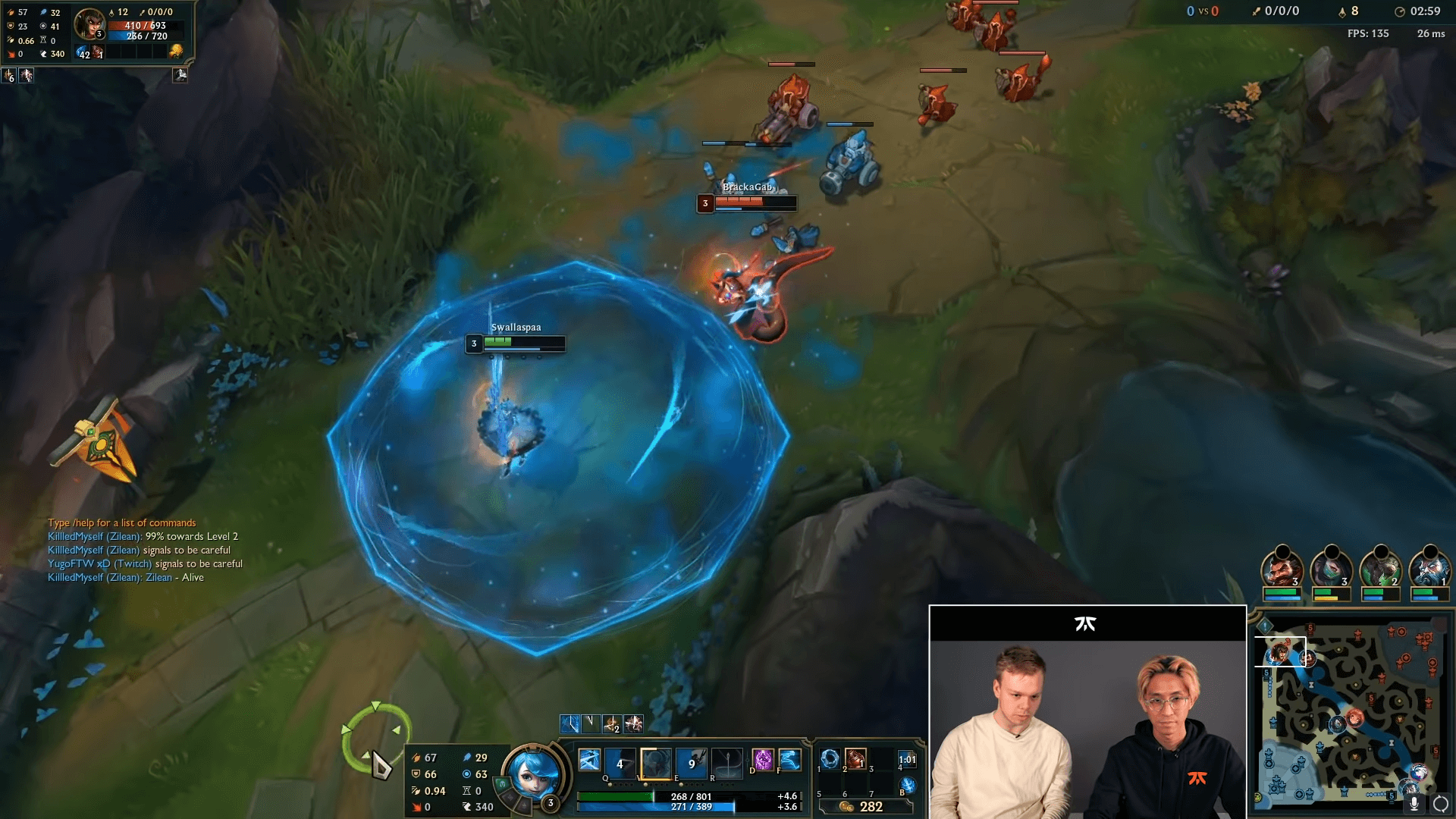
Your Summoner Level is specific to your account and increases by gaining experience by playing matches against other players.
Summoner Spells offer unique and varying abilities that are to be used strategically during gameplay, based on characters chosen by the team and a prediction of how the opposition will play. Selecting the Summoner Spells involves planning tactics with teammates, and trying to second-guess opponents’ strategies.
Some Summoner Spells are a staple for teams. For instance, Flash is useful regardless of your overarching strategy. This spell can instantly be used to escape from an opponent when Trading, or to dash quickly toward an opponent to land a final blow. Flash can also be used to evade, manoeuvre over walls, and to make a swift escape. Strategically speaking, Flash has many uses. Another example is when making a kill in the vicinity of a tower and having suffered some damage, your Champion can “Flash” out of range, thereby avoiding tower aggro.

Q. What are some examples of choosing Summoner Spells specifically because of the opposing teams Champion picks?

“You might pick Ghost into Tryndamere top; sometimes you run cleanse against heavy CC teams. Sometimes you choose to run Exhaust instead of Ignite on bot because the enemy has burst heavy champions.”
YamatoCannon, Head Coach

“When playing against heavy CC champion like Leona (long range stun), Cleanse will end up giving an edge; Exhaust as a tool to create more leeway vs HoB users like Kai’sa / Draven for example.”
Shaves, Assistant Coach
Some spells slow down your opponents, disable their Summoner Spells, give you the ability to teleport and even heal you in battle. When teams use these Summoner Spells in a combined offensive or defensive strategy, the effects can completely alter the game.
Currently, the following Summoner Spells are available to teams, each with their own specific effect and cooldown period*: –
- Cleanse
- Exhaust
- Flash
- Ghost
- Heal
- Smite
- Teleport
- Clarity
- Ignite
- Barrier
- Mark/Dash
*More info in our Useful Links.
Champion Stats
Health (HP)
- Health is represented as a green bar. This is the amount of damage you can receive until you die.
Abilities and Resources
Abilities cost resources when you cast them, depending on the Champion you are using.
- Mana is indicated by a blue bar below the health bar. This bar regenerates over time. Mana can also be increased by purchasing items
- Energy is indicated by a yellow bar, if your Champion uses energy for abilities. Energy regenerates over time but at a faster rate than mana. Certain attacks may also increase the speed of regeneration.

- Fury, rage, and courage are also used for abilities, depending on the Champion.
Attack Damage (AD)
- Attack Damage – also known as Physical Damage – is the damage you deal using basic auto-attacks.

Armour
- Armour reduces incoming physical damage, and reacts 1:1 with attack damage (physical damage). For example, a Champion with 100 armour 100 more effective HP, which means it takes 200 attack damage to kill them.
Magic Resist (MR)
- Similar to armour, Magic Resist works against magic damage.
Attack Speed (AS)
- This is the number of basic attacks performed (per second) and is capped at 2.5.
Movement Speed (MS)
- Movement Speed is the number of map units a Champion moves per second. This does not increase with level, but can be increased with some items.
Bonus Champion Stats
Besides the above basic Champion stats, you can also use bonus stats that come from runes, items and abilities. Some examples are below: –
Ability Power (AP)
- Primarily, Ability Power makes your abilities (QWER) more powerful, however, AP can also increase the strength of some items and runes.
Ability Haste
- All abilities have cooldowns which tell you how long before you can cast the effect again. Some items provide you with ability haste, meaning your cooldowns are reduced.
Critical Strike Chance
- Referred to as “crit chance”, each of your basic attacks gain a percentage amount of chance to deal 175% damage. Crits occur randomly, but calculated over all attacks; each 1% of crit chance will increase effective attack damage by .75%.
Other bonus stats include Magic Penetration, Omnivamp, Tenacity and various others, and explainers for each stat are available during Champion select.
Runes

Runes are another way to tune up and customise a Champion’s abilities and stats, and the five rune trees consist of (left to right): –
- Precision
- Domination
- Sorcery
- Resolve
- Inspiration
The runes in LoL have various effects and allow you to increase damage, cast more powerful spells, and allow for your own personal playstyle. It is also worth noting that at level 10, you are able to customise your rune page in-game and outside of Champion select.

Q. Should runes be used for your own benefit or team benefit?

“You pick the runes that help you win the game.”
YamatoCannon, Head Coach

“Depends on the champion; if you are playing Corki / Graves / Cassio / Kayle and you are a lategame beast or rather lategame insurance then your own benefit is the team benefit”
Shaves, Assistant Coach
Understanding runes can be a mammoth task, so it is recommended that you seek advice from the many LoL communities and fan databases, which discuss the best Champion builds and optimal rune usage. See our Useful Links section further into this guide.
Summoner’s Rift
The map where each battle takes place, Summoner’s Rift is one of the most famous game maps in existence, hosting 180 million League of Legends players in 2022.
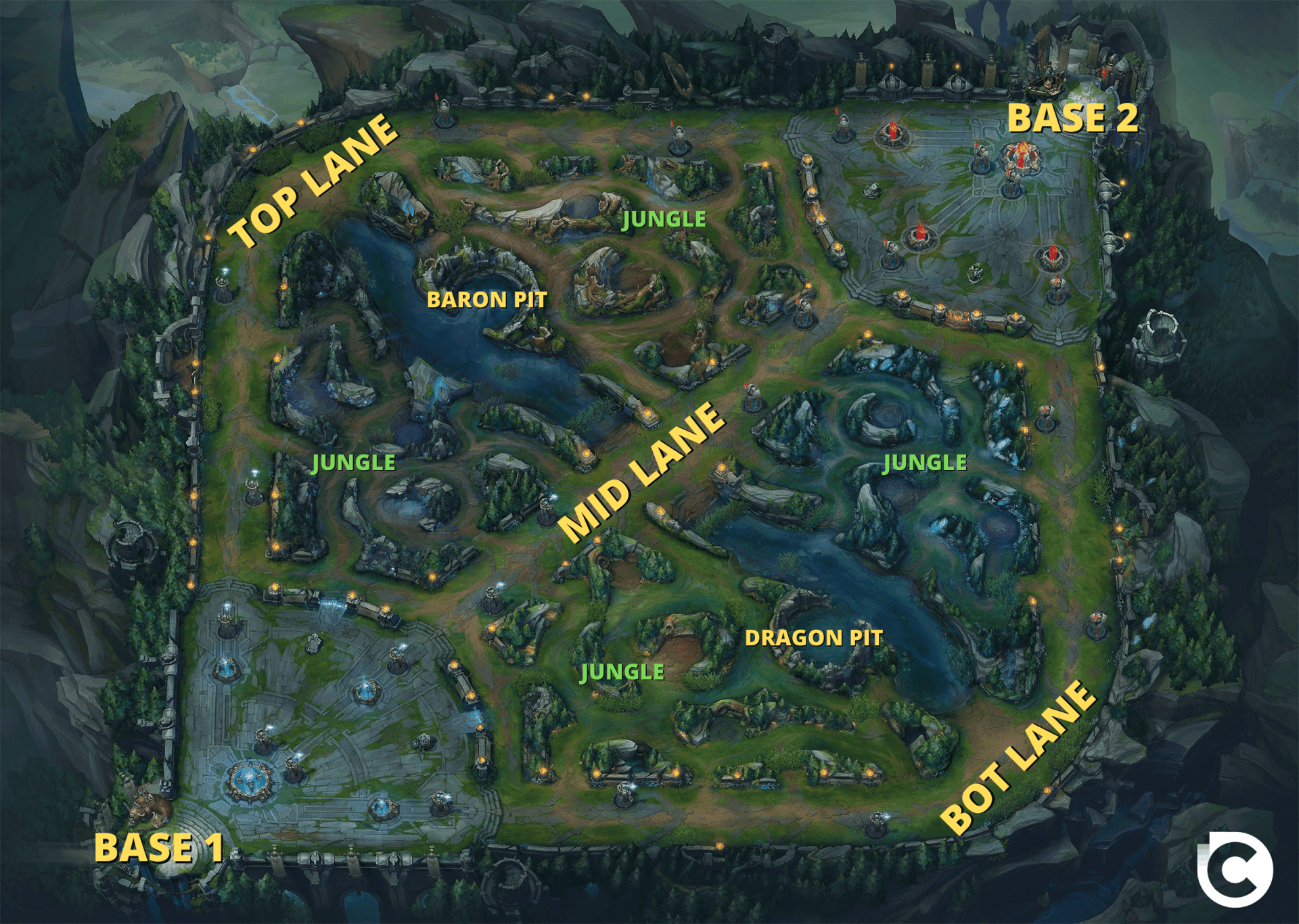
Gameplay & Objective
The game begins with you and your four teammates spawning at your Fountain in your base. After 15 seconds you are free to roam the rift. After one minute has elapsed, Minions spawn and battle commences.
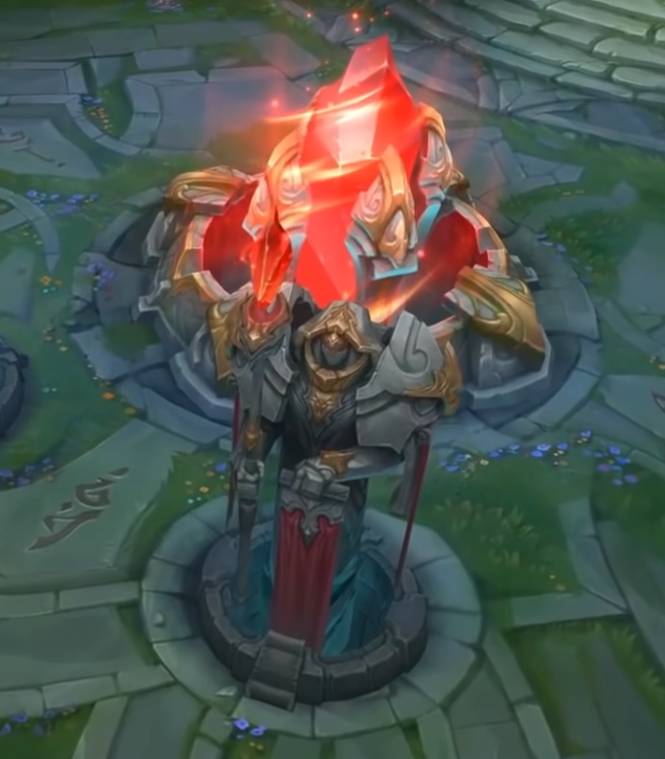
The primary objective is to destroy the opposing team’s Nexus – an obelisk inside the base.
Turrets
Turrets, which are commonly called towers, are placed around the rift and act as a Defence structure. Each team has 11 turrets, and these should be destroyed to progress to the Nexus. Although you can technically win a game by destroying as few as 5 turrets, this will not provide you as much experience, and most games will require you to destroy more than five.
Your team has three turrets in the top lane, three in the mid and three in the bot lane. The Nexus is also protected in the base by two turrets, which must be destroyed before attempting to destroy the Nexus.
The turrets are capable of dealing damage to Champions and minions, and also provide vision to your team, as well as allowing you to see traps and enemies with stealth abilities.
Progressive Turret Objectives
The progressive way to win the game is to destroy outer turrets (in the lanes), inner turrets (just outside of the base) and inhibitor turrets (protecting the Nexus).
The first 5 minutes of a game affords the top and mid turrets with fortification, which means they take 50% less damage.
Outer turrets are also equipped with armour plating (a shield that has five segments) for the first 14 minutes of a game. Destroying these plates will give you gold, but with each plate that is destroyed, Bulwark is triggered, affording the turret with significantly higher defence for 20 seconds. This defence mechanism is calculated using the number of Champions in the vicinity, and defence will be stacked & reset if you destroy another plate during Bulwark.

Each turret is also equipped with Ohmwrecker, which is reinforced armour and Warden’s Eye. Ohmwrecker provides bonus armour penetration, dealing 40% bonus damage on successive shots, up to a cap of 120%. Ohmwrecker will also not allow enemies to dodge shots (unless they have an ability making them impervious to targeting). Warden’s Eye allows you to see traps and stealthed units in the vicinity.
Turret Targeting
Turrets have an order of priority when it comes to defending you and your teammates. They will fire at Siege & Super Minions as a priority, then Melee Minions, then Caster Minions, and then Champions. Although this is interchangeable based on range and who is attacking your team’s Champions, this is the general rule. See below for Minion types.
Turret priorities are important to know and understand, but the most pertinent thing is that a turret will immediately switch to attack any enemy Champion that attacks a friendly Champion within its range. Going into turret range with anger is – for the most part, and certainly earlier in the game – a big risk which can easily backfire if you miss your timing on an ability.
Minions
One of the most important aspects of LoL are Minions. These are the pawns in your strategic game of battle chess, allowing you to lay waste to enemy Champions and turrets, while they run interference and frustrate the opposition.
The four types of Minion are:
- Melee Minions – a basic attack minion who attack based on range
- Caster Minions – can deal damage at a distance, but easier to kill
- Siege Minions – have ranged attacks and deal more damage
- Super Minions – close range battlers, deal more damage, stronger than other Minions. Activated when an inhibitor is destroyed, replacing Siege Minions
Lanes & Laning
The map has three lanes – Top lane, Mid Lane and Bot Lane. Each of the lanes lead from your base to the enemy base and Nexus. Certain Champions perform best in specific lanes, which we’ll cover later.


“You decide depending on how strong you are, what resources you have and the overall position of the game. As an example: If you are stronger but the enemy jungler is hovering topside, trading is not correct. Another example could be if the enemy is going to base and to back maybe you need to focus on pushing the wave rather than trading health points.”
YamatoCannon, Head Coach

“Hard question – as a rule you want to trade to deny / punish CS approach of the opposing laner or you want to force trading to put up pressure and handshake recall windows that benefit you more than the enemy – example here is playing assassin vs poke mage; you will always end up in a better recall state when you manage to force a recall pre 1300g to deny the lost chapter angle from the poke mage”
Shaves, Assistant Coach
When you are “Laning”, you are operating in the lanes and progressing your objectives. When laning, Minions are crucial in Trading & Farming.
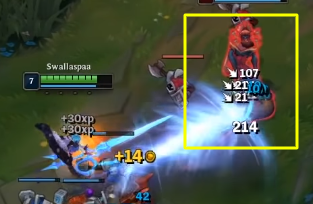
We will cover Trading later, but broadly speaking, this describes when you are damaging an enemy in one of the lanes, and they damage you – hence trading. Minions will switch their attention to you when you are trading with an opponent, and can often deal more damage to you than you have caused to the opponent. Tactically, Minions are a troublesome ally when you are laning, and will assist you in pushing back opponents. When using Minions to your advantage, this is called Wave Management.

Q. How important are Minions when Laning?

“They are everything. They give gold, they give experience, they give power when fighting and they give vision.“
YamatoCannon, Head Coach

“Minions provide a globally limited gold/XP source – hence they are important. If you manage ending up having full control over a lane that means you are in control of 1/3 of the GLOBAL income of the map”
Shaves, Assistant Coach
With opposition Minions, the objective is to deal the killing blow – referred to as Last-hitting or CS-ing (Creep Score) – as this will result in being rewarded with gold. This activity is known as Farming. The number of Minions you have dealt the last blow on is counted, and CS is a good indicator of who is in the lead in a game. With more gold, you are able to purchase upgrades to abilities during the Shop phase of a match.
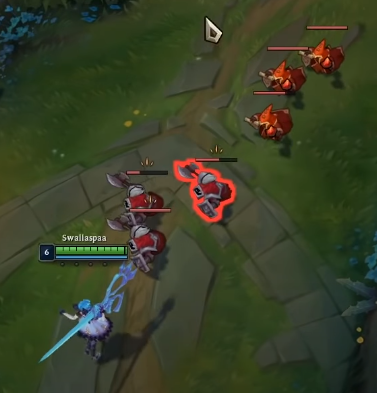
League of Legends Tips
Do I Need A Powerful PC For League of Legends?
All of this advice is great… but what about your PC? Do you need to upgrade? Is your PC powerful enough to play LoL already?
The good news is League of Legends is not an massively resource hungry game, but if you plan to play at a competitive level, you will rely heavily on PC performance. Esports pros and those on the path to greatness require a rig with low latency, boosted performance when needed, and high framerates no matter what chaos is going on in the Rift.
For superior performance in League of Legends, as well as other competitive titles (DOTA 2, Apex Legends, VALORANT etc.), Chillblast have designed a range of gaming rigs to take you to the top. Designed with and influenced by the Fnatic team, for the competitive gamer and aspiring pro Esports player – Chillblast is “The Choice of Champions”.
Chillblast x Fnatic Recommends: Chillblast Fnatic Boost Gaming PC
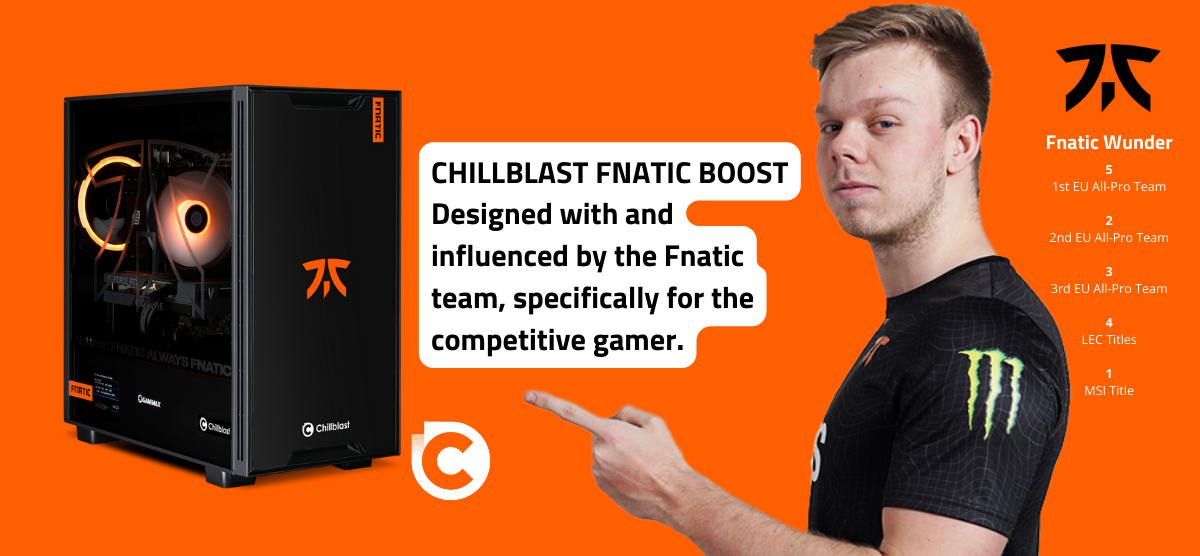
- Operating System: Windows 11 Home
- Processor: Intel Core i5-12400F
- Graphics Card: NVIDIA GeForce RTX 3050 8GB
- Memory: 16GB DDR4 3200MHz
- Storage: 500GB M.2 Gen 3 Solid State Drive
This Chillblast Fnatic Boost is the perfect PC for Esports enthusiasts who want to upgrade their gameplay and enter the world of competitive gaming. The Boost delivers high frames per second (FPS) and low latency in the latest Esports titles such as CS:GO, League of Legends and DOTA 2 allowing you to focus on becoming a league winning champion.
Next: League of Legends – Absolute Beginner’s Guide Part 2
In Part 2 of this guide, you will learn about: –
- Choosing a Champion
- Jungles
- Baron Pit
- Trading
- Farming
Useful Links
We are going to include a Useful Links section in each of the four parts of this guide, to help you ease through the mechanics, gameplay and more advanced nuances of League of Legends.




